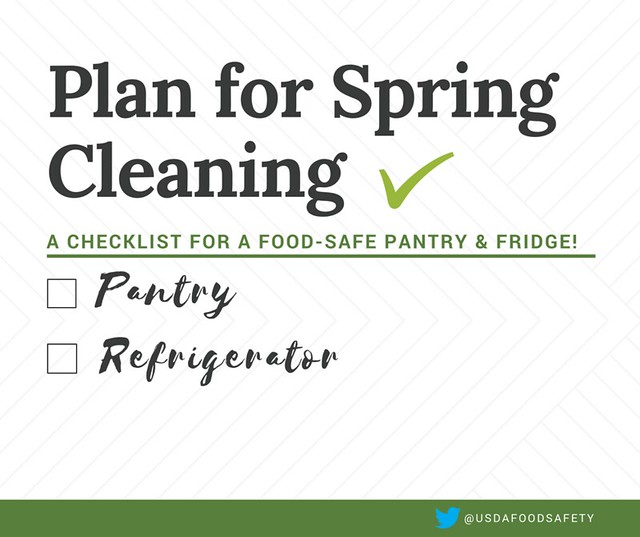
The refrigerator and pantry are where most people store their food. But these storage areas may also be one of the less frequently cleaned places in your home, which could be hazardous to your health.
The refrigerator is one of the most important pieces of equipment in the kitchen. Without it, our food would spoil and could make us sick. Refrigerators should be set to maintain a temperature between 34° and 40°F to preserve our foods. Setting the refrigerator temperature too low will cause your refrigerator to work overtime and could also freeze some of your foods. Many of today’s advanced refrigerators have built-in thermostats that measure their internal temperature. If your fridge does not have a built-in thermostat, you should keep an appliance thermometer inside in a visible place to monitor the temperature.
Here are some tips to make your fridge (and your home) more healthy and safe:
- Clean spills immediately – Clean surfaces thoroughly with warm, soapy water; then rinse. Do not use solvent cleaning agents or abrasives, as these may allow chemical fumes/tastes into your food and ice cubes and make them unsafe to eat.
- Store leftovers safely – Throw out perishable foods that have spoiled and no longer can be eaten. Leftovers like meatloaf, pizza or casseroles shouldn’t be left in the refrigerator more than four days. Refrigerate raw poultry and ground meats for no more than one to two days.
- Clean the exterior – Keep your refrigerator free of dust and lint. Clean the condenser coil several times a year with a brush or vacuum cleaner to remove dirt, lint or other accumulations to ensure efficiency and maintain proper temperature.
Cleaning your pantry will save you money by keeping you aware of what you have and help you avoid a pantry insect infestation. It will also ensure your foods are safe to consume. Here are some tips for a clean, bug-free pantry:
- Check your cans – Discard cans that are leaking, rusted, bulging or badly dented. Never use food from cracked jars, jars with loose or bulging lids, or any container that spurts liquid when you open it.
- Throw out any food you suspect is spoiled – Never taste food to determine its safety. Wipe off sticky containers, along with crumbs and spills on your pantry shelves with all-purpose cleaner, vinegar, or warm soap and water.
- Check the dates on your foods – “USE by” date indicates that perishable products should be consumed by the date listed on the package or discarded once the date has passed. “BEST if Used By” date informs shoppers that after the specified date, the shelf-stable product is safe to use or consume, but has exceeded the window of its optimal taste or performance. High-acid canned food such as tomatoes, grapefruit and pineapple have a shelf life of 12 to 18 months beyond their listed dates. Low-acid canned food such as meat, poultry, fish and most vegetables can be kept for two to five years beyond their listed dates — if the can remains in good condition and has been stored in a cool, clean and dry place.
If you have questions about storage times for food or beverages, we recommend downloading our smartphone and tablet application, the FoodKeeper. With more than 150,000 downloads for Android and iOS smartphones, the FoodKeeper is quickly establishing itself as the quick reference go-to guide for safe food storage and preparation. A recent update integrated food product recalls into the app. Available in English, Spanish and Portuguese, the FoodKeeper has information on safe storage of leftovers and 500+ different food and drink items.
For more key food safety practices, follow FSIS on Twitter @USDAFoodSafety or Facebook. Consumers with questions about food safety can call the USDA Meat and Poultry Hotline at 1-888-MPHotline (1-888-674-6854) or chat live with a food safety specialist in English or Spanish at AskKaren.gov, available from 10 a.m. to 6 p.m. ET, Monday through Friday.


